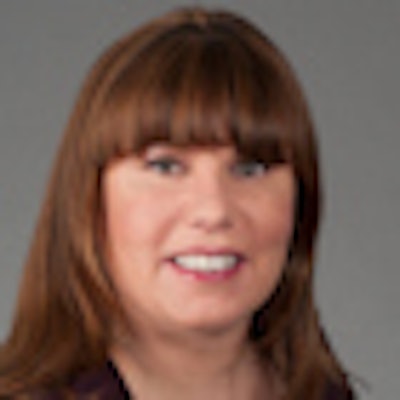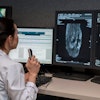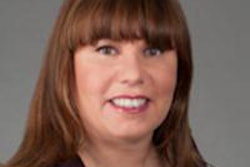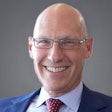
A baby shower has traditionally marked a step to acceptance, a tribute to unity. I joined my first radiology practice as a green radiologist just out of training; I was the first woman, young, scared, and really not ready to shoulder the load of partnership. It wasn't until the guys threw me a baby shower that I knew I was really "in."
They all came with boxes wrapped in ribbons, all to wish me the best. Not griping because I got to take my vacation all at once, as my maternity leave; not complaining I was taking two more weeks without pay; not worrying about whether or not I would really be able to pull my weight after the baby -- but there to celebrate and support the birth of new kin.
Seeking community
Back when I finished training, after the boards and after a fellowship, most really strong residents went out and sought the best private-practice opportunities -- good groups with a sure path to partnership. Why? Sure, money was part of it, but it was by no means the only reason. Community and a feeling of belonging were also strong drivers.
 Dr. Mary Morrison Saltz.
Dr. Mary Morrison Saltz.
A radiology group was like family -- working together for the collective common good. A place where your best friends were your partners, and where in order to thrive, you all had to give your best; in return, you would get ownership of the success and a full and equal share of the profits, or losses. But of course there were the "bad" groups too ...
The path for those who stayed in academics was quite different and often more challenging than for those who left. A few were destined to fame and greatness -- they were superstars, leaders among leaders, with international lecture circuits, an anteroom with a secretary, adoring residents, and rafts of ribbons at RSNA. At the top, academic salaries weren't too bad, and anyway, if you could invent a catheter or a device, publish a book, or, who knows, become a TV doctor, well, life was good and the money was fine.
But for sure, not everyone who stayed in academics was on the path to fame and fortune. Many stayed waiting for a great private-sector job; others because it was easier to stay than to leave. Still others remained because they needed to be in a certain geographic region, and it was the only thing they could find in the area. Boston was a key example of that!
The new heroes
Yet how is it today? Groups have grown, and the easy camaraderie that was possible with 20 radiologists is impossible with 75!
Size is not the only thing that has changed groups. Our medical culture is changing, too. The freewheeling days of the 1980s, where "The Right Stuff" glorified Chuck Yeager and his individualistic rule-breaking path to personally winning against the odds, are being replaced by a culture in which we recognize the importance of systems, rules, and checklists.
Our new heroes are more like John Glenn -- a member of a cadre of well-trained astronauts, any one of whom could be called on to do the job, relying on well-defined standards rather than colorful exuberance.
This attitude, along with the increased need for hierarchy and structure imposed by increasing group size, renders that rather freewheeling world of private-practice radiology a relic. Corporate structure is now a necessity, and the old easy familiarity is really no more. Not everyone is equal, there are well-defined leaders, and there is no certain path to the top.
Academic practice has changed as well, claiming its fair market share and spreading its logo to hospitals large and small, near and far. The line between what is an academic hospital and what is a private-practice hospital has blurred and continues to become less distinct.
Service provided to these far-flung hospitals is in actuality more like private practice than not. Subspecialty reads are given by faraway experts, with 24/7 coverage provided by teleradiology groups -- often the same ones used by the nonacademic hospitals! Medical schools are beginning to recognize clinical service as important for promotion, giving recognition for clinical service and not only for academic contributions.
The salary distinctions are also eroding. The period of high pay in private practice is closing, and no longer does the academic pay scale seem as unfair, coming as it does with relative job security and increasing recognition of clinical work at the institutional level.
Academic and nonacademic hospitals have increasingly similar salaries, challenges, and hierarchies. This metamorphosis will inevitably change the face of radiology. As the distinctions between academics and the "real world" blur, the brain drain to private practice may well be over. What do you think?
Dr. Mary Morrison Saltz is a board-certified diagnostic radiologist who is currently the chief medical officer for Hospital Radiology Partners, a national radiology contract management and consulting company based in Atlanta.
She has served as radiology chair and service chief at hospitals in Florida, Ohio, and most recently at Emory Johns Creek Hospital in Johns Creek, GA. Dr. Saltz is a member of the American College of Physician Executives, the American College of Radiology, and the Radiological Society of North America, and she sits on the Citizens Advisory Council of the Duke Cancer Institute in Durham, NC.
Dr. Saltz has more than two decades of experience in turning around problem radiology departments in three states. As a hands-on leader, Dr. Saltz's expertise is working hand-in-hand with hospital administration to guide the radiology teams to success. Dr. Saltz has led quality assurance programs in Florida and Ohio, and served as chief quality officer for community practice initiatives at Emory Health Care. She also has more than 20 years of private-practice experience.
She is a graduate of McGill University, with a Bachelor of Science in Human Genetics, and Duke University, where she obtained her Doctor of Medicine. Her postgraduate education included a residency at Boston University where she served as chief resident, and a fellowship in interventional abdominal radiology at Massachusetts General Hospital.
The comments and observations expressed herein do not necessarily reflect the opinions of AuntMinnie.com, nor should they be construed as an endorsement or admonishment of any particular vendor, analyst, industry consultant, or consulting group.



















